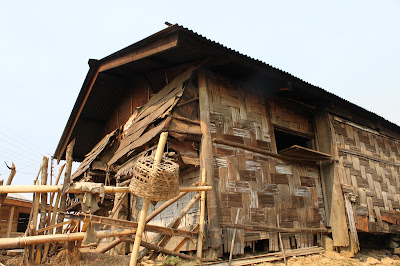Phuye - Some Homes
Images are from a recent trip to Phuye (Zunheboto, Nagaland) while text is from J H Hutton's seminal 1921 publication 'The Sema Nagas'.
Homes, so different from each other, stood out, reminding one of the skill-sets and simplicity of those they belonged to. At some of these we were lucky to have tea and meals.
Sema villages being as a rule very much smaller,—a village of 100 houses is quite large for a Sema village — the cultivated lands are nearer to the village
and the fighting men more easily assembled in case of a raid. The approach to a Sema village is always over land
consisting largely of open jhum, and in part of very thick low jungle, in which the movement of an enemy would be most difficult.
The arrangement of the houses in a Sema village is looser and more open than in an Angami village, and the scattering of the houses is conducive to greater cleanliness and decreased danger from fire. The sitting places of a Sema village consist of simple platforms, generally of bamboo, and in front of the houses of important persons.
The house of a Sema is on the average smaller than an Angami house and much less substantial in construction. Where the Angami uses wooden planks the Sema employs bamboos, so that his house never has the solidity typical of an Angami house. The house of the ordinary Sema villager is about 12 to 15 paces long by 5 to 6 wide, but the houses of chiefs are considerably larger and sometimes very large indeed.
The posts supporting the house are set in hues of three, a small house needing three such hnes, a large house four, and a very large house still more. The eaves are brought down to within 3 or 4 feet of the round, and an apse-like addition is often made to the front or back of the house, or both, the roof of it being low and
semicircular. The two bamboos forming the front of the gable are prolonged beyond the roof to form horns, called tenhahu-hi (i.e., " snail-horns "), sometimes embellished
with imitation birds of wood fastened on to them, and with ornaments of gourds and bamboo tassels hung to the ends to rattle in the wind.







Comments
Post a Comment